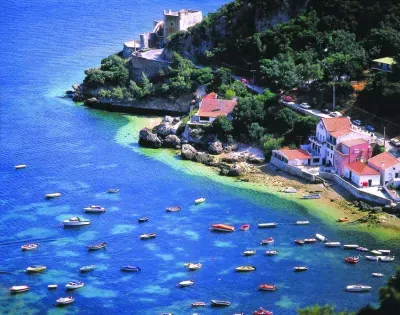
Convento da Nossa Senhora da Arrábida Diogoworld CC BY-SA
Convento da Arrábida Antonio SacchettiConvent of Nossa Senhora da Arrábida
Set among the pine covered hills of the Serra da Arrabida this complex of 16th century building was originally a Franciscan monastery. The site covers around 25 hectares and contains a number of buildings, shrines and woodland.
Founded in 1542 by a Castilian monk, Friar Martinho de Santa Maria, the convent was built on land owned by the Duke of Aveiro - D. João de Lencastre. This particular site was chosen not only for its lovely views over the Arrabida Hills but because it was where a vision of the Virgin Mary riding a mule up the hillside was said to have happened.
Above the main monastery buildings, on one of the highest points in the Serra da Arrabida, are the ruins of the Old Monastery. Built into the hill itself are the remains of several small chapels along with a number of shrines and hermitage cells. It is said that Friar Martinho lived in one of these cells for two years.
The Convento da Arrábida ceased to operate as monastery after the 1830s when the government suppressed the activities of many religious orders. Following this there were many years of neglect and many of the buildings became derelict or were looted. The site was bought by the Palmela family in the 1860s but the monastery's decline continued. It was not until the 1940s that any restoration work was carried out.
In 1990 the monastery was sold to the Fundação Oriente, a non-profit cultural organisation, who run retreats from the complex. The monastery is still open for pre-arranged tours from Wednesday through to Sunday at a small cost.
SesimbraSetúbalPhone
+351 21 358 52 00Link
http://www.foriente.pt/137/history.htmAttraction type

Sesimbra travel guide »
This picturesque fishing port lies about 40 km due south of Lisbon and is situated nestled at the foot of the hills of Arrabida and inside a sparkling blue bay, protecting it from cold northerly winds. Since the 1960’s Sesimbra has become increasingly popular with weekenders from Lisbon, looking for an easy escape from the city and a pretty place to eat fantastic fish, stroll on the promenade or…